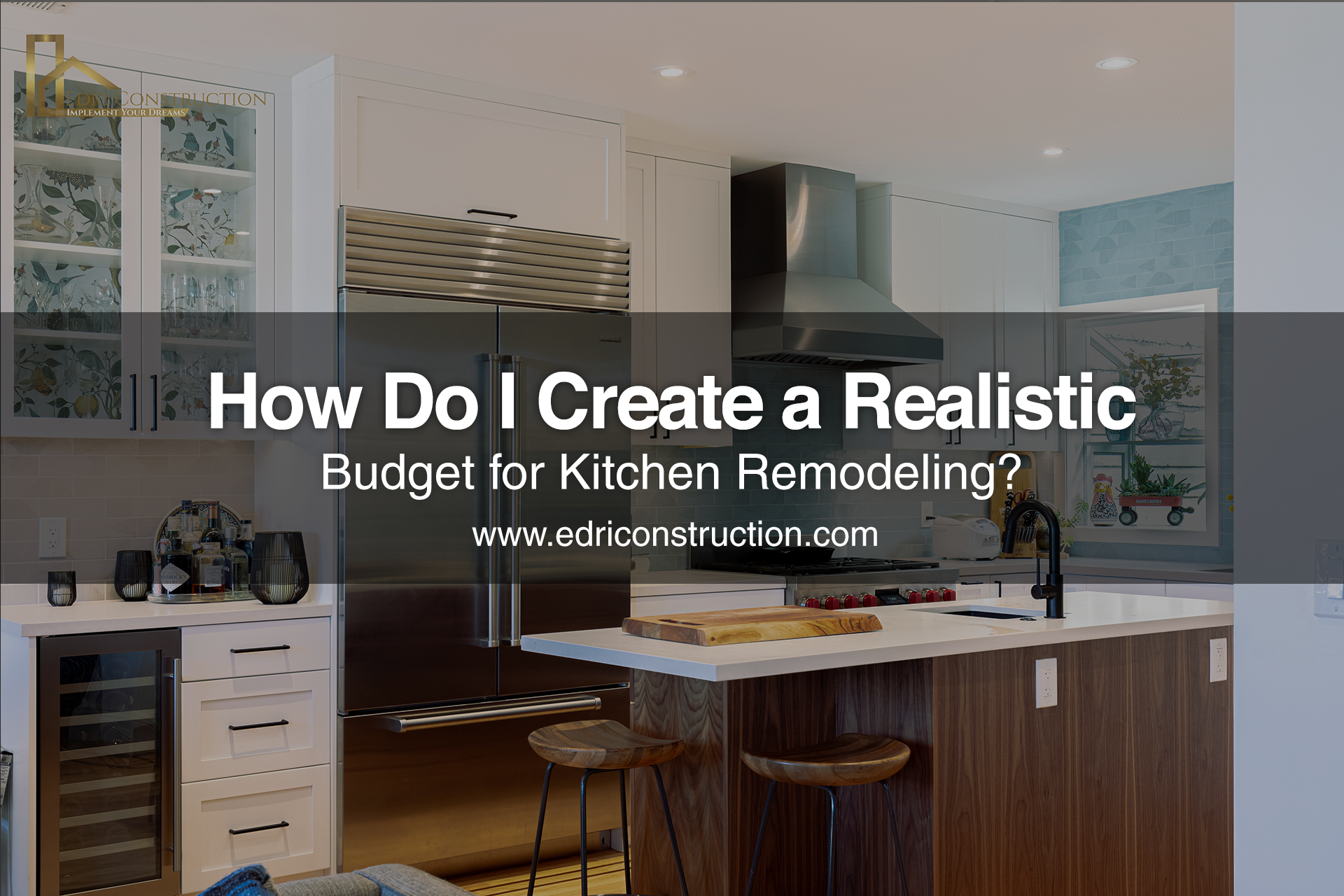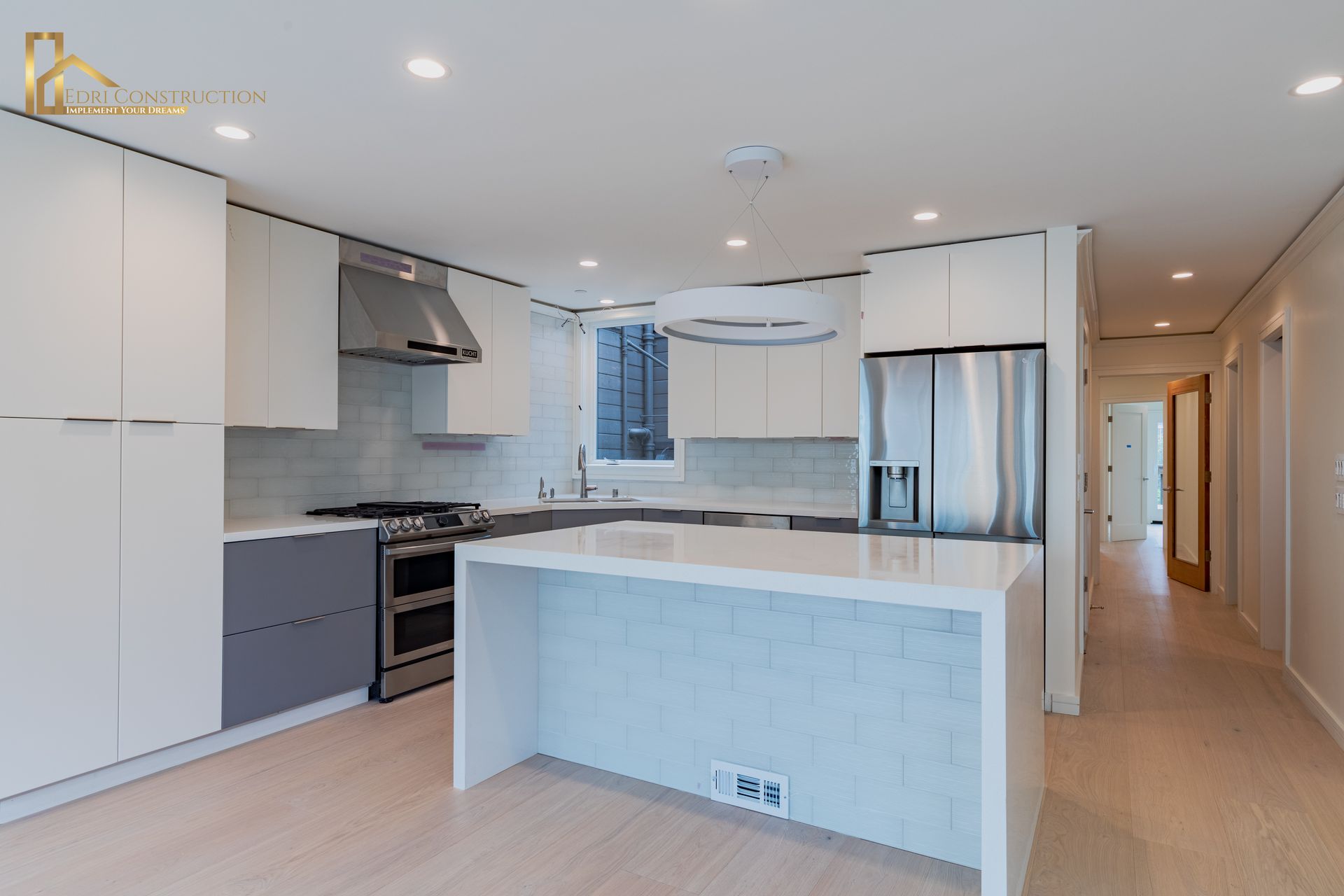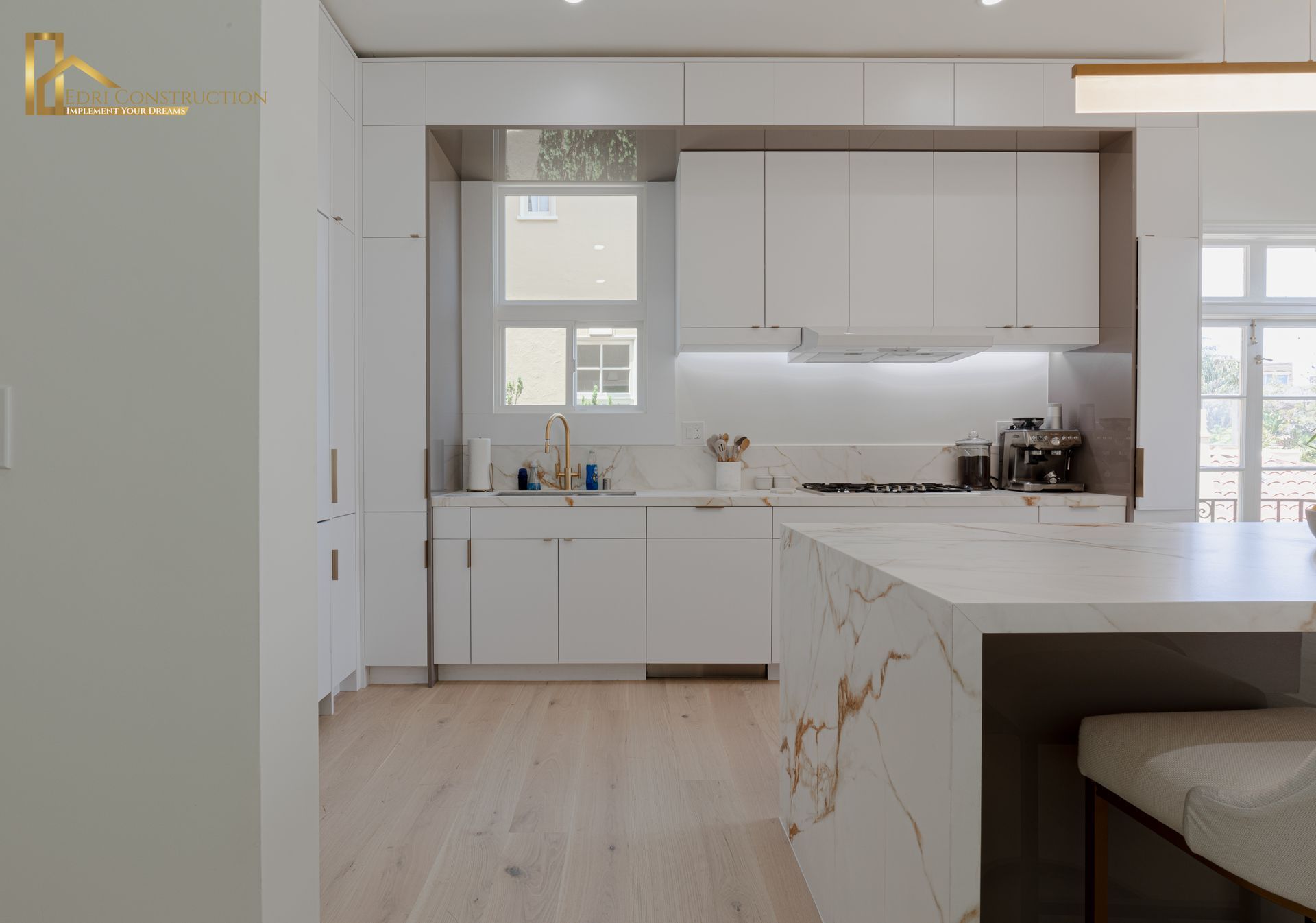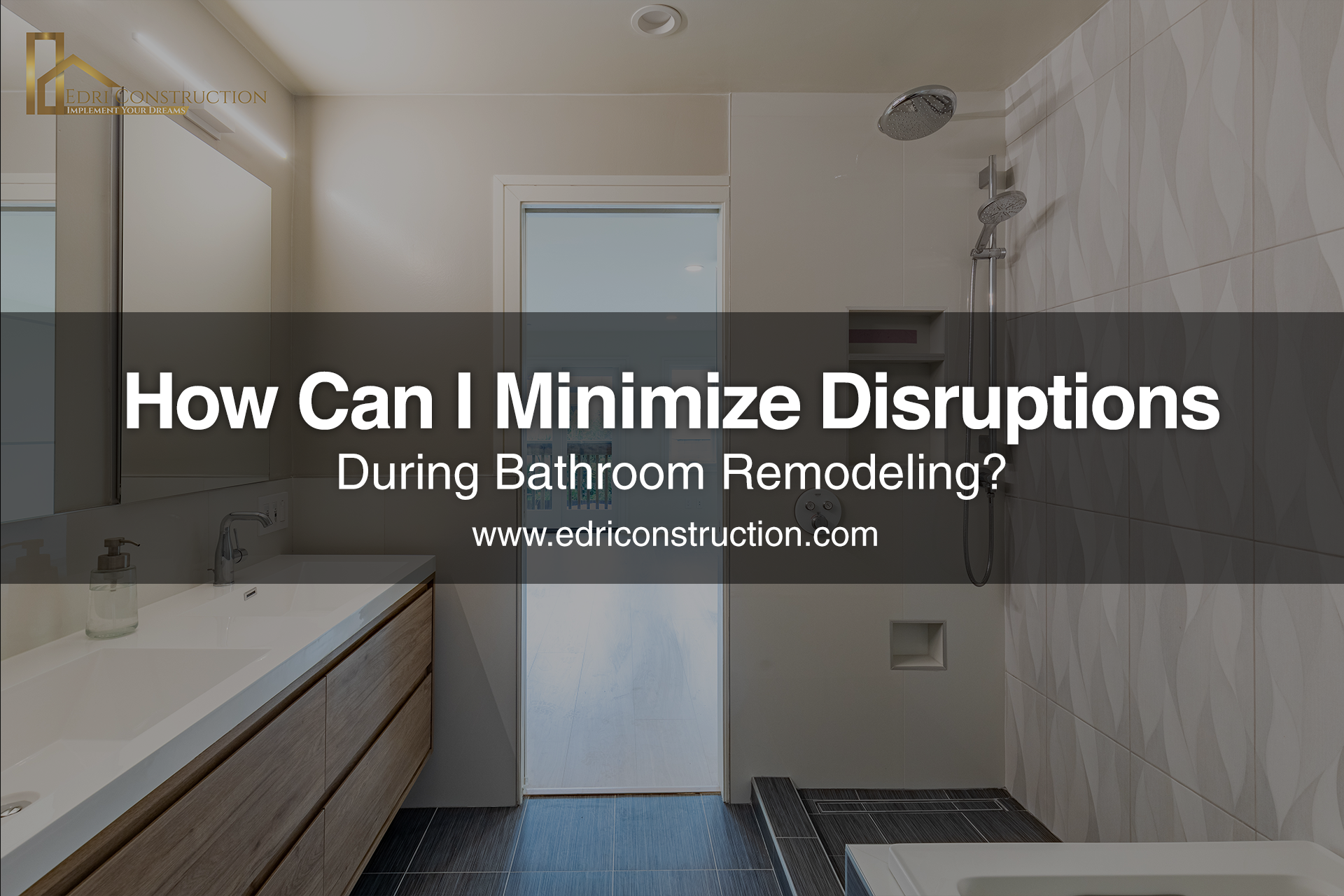How Do I Create a Realistic Budget for Kitchen Remodeling?

INTRODUCTION
Remodeling your kitchen can be an exciting venture, but it also requires careful planning, especially when it comes to budgeting. Creating a realistic budget is crucial to ensure that your dream kitchen renovation doesn't turn into a financial nightmare. In this guide, we'll walk you through the essential steps to help you create a realistic budget for your kitchen remodeling project.
Understanding Your Needs and Wants
Prior to delving into the intricacies of budgeting, it's essential to conduct a thorough evaluation of your requirements and desires for your upcoming kitchen renovation. Take ample time to ponder over crucial factors including the layout, functionality, aesthetics, and any particular features or appliances you envision incorporating. By discerning between necessities and luxuries, you can strategically allocate your resources to maximize the impact of your investment.
Begin by scrutinizing the current layout and functionality of your kitchen space, pinpointing areas for improvement or enhancement. Consider how you utilize the space on a daily basis and envision any modifications or additions that would streamline your cooking and dining experience. Whether it's optimizing storage solutions, expanding countertop space, or reconfiguring the layout for better flow, identifying your practical needs will serve as the foundation for your remodeling project.
Simultaneously, indulge your creative aspirations by contemplating the aesthetic aspects of your ideal kitchen. Visualize your desired color scheme, materials, and design elements, taking inspiration from interior design trends, personal preferences, and lifestyle considerations. Whether you aspire for a sleek and modern ambiance or a cozy and rustic charm, clarifying your aesthetic vision will guide your selection of finishes and furnishings.
Moreover, make a comprehensive list of any specific features or appliances that you deem indispensable for your dream kitchen. Whether it's a professional-grade range, a spacious kitchen island, or innovative smart home technology, prioritize these must-have elements to ensure they receive adequate budgetary allocation.
Equally important is distinguishing between must-haves and nice-to-haves to effectively prioritize your spending. While certain features or upgrades may enhance the functionality or aesthetics of your kitchen, they may not be essential for achieving your primary objectives. By categorizing your preferences into essential and optional items, you can make informed decisions when allocating your budget, ensuring that vital aspects of your renovation receive precedence.
Taking the time to assess your needs and wants for your new kitchen empowers you to embark on your remodeling journey with clarity and purpose. By prioritizing functionality, aesthetics, and budget considerations, you can orchestrate a transformative renovation that seamlessly aligns with your vision and enhances your culinary haven for years to come.
Setting Your Budget

Now that you've gained clarity on your kitchen renovation needs, the next crucial step is setting a budget. Kickstart this process by evaluating how much you can feasibly allocate to your remodel. Take into account your present financial standing, available savings, and potential financing avenues. It's prudent to reserve a buffer for unforeseen costs that might emerge throughout the project duration.
Commence by assessing your financial landscape and determining the scope of your kitchen remodeling budget. Factor in your current income, savings, and any additional sources of funding you may tap into, such as home equity loans or personal loans. Strive to strike a balance between allocating sufficient funds to realize your renovation goals while maintaining financial stability.
Explore various financing options to supplement your budget if needed, such as low-interest loans or lines of credit. Carefully evaluate the terms and conditions of each financing avenue to ensure they align with your long-term financial objectives and repayment capabilities.
It's imperative to set aside a contingency fund to cushion against unexpected expenses or project delays. A prudent approach is to reserve approximately 10-20% of your total budget as a contingency, providing a safety net to address any unanticipated challenges that may arise during the renovation process.
By establishing a realistic budget tailored to your financial capacity and renovation objectives, you can embark on your kitchen remodel with confidence, knowing that you've diligently accounted for potential costs and contingencies. This proactive approach not only mitigates the risk of overspending but also fosters a smoother and more efficient remodeling experience, ultimately culminating in the realization of your dream kitchen within your financial means.
Researching Costs
Moving forward, delve into the realm of kitchen remodeling costs to gain insight into the financial aspects of your project. This entails conducting thorough research on the expenses associated with diverse elements of the renovation process, encompassing materials, labor, permits, and potential auxiliary expenditures like hiring a designer or architect. Rely on credible sources such as reputable home improvement websites, renovation calculators, and detailed contractor quotes to obtain a comprehensive understanding of the financial implications involved.
Begin your exploration by investigating the costs of essential materials required for your kitchen renovation. This encompasses everything from cabinetry and countertops to flooring, backsplashes, fixtures, and appliances. Leverage online resources and supplier catalogs to compare prices, quality, and durability, ensuring that your budget aligns with your desired material selections without compromising on quality or aesthetics.
Simultaneously, delve into the realm of labor costs associated with your remodeling endeavor. Research prevailing rates for skilled tradespeople such as carpenters, plumbers, electricians, and contractors in your locality. Solicit multiple quotes from reputable professionals to gauge the range of labor expenses and negotiate competitive rates while prioritizing quality craftsmanship and reliability.
Factor in permit fees required for regulatory compliance and adherence to building codes. Consult your local municipality or permitting authority to ascertain the specific permits and associated costs applicable to your renovation project. Incorporate these expenses into your budgetary calculations to avoid any last-minute surprises or delays during the construction phase.
Contemplate the potential need for specialized expertise by engaging a designer or architect to conceptualize and execute your vision. Research their professional fees and ascertain whether their services align with your budget and renovation objectives. Collaborating with design professionals can enhance the aesthetic appeal and functionality of your kitchen while ensuring cohesive integration of various design elements.
Prioritizing Your Spending

Armed with a well-defined budget, it's imperative to strategically prioritize your expenditures according to your renovation requirements and preferences. Focus a significant portion of your budget on indispensable components like cabinets, countertops, and appliances, while allowing room for flexibility with less critical aspects such as decorative accents or premium fixtures. By adopting this approach, you can maximize the return on your investment and achieve optimal value from your kitchen remodeling project.
Begin by directing a substantial portion of your budget towards fundamental elements that form the backbone of your kitchen's functionality and aesthetics. Cabinets play a pivotal role in storage optimization and overall kitchen organization, making them a worthwhile investment. Allocate sufficient funds to procure durable, high-quality cabinetry that aligns with your style preferences and complements the overall design scheme of your space.
Prioritize budget allocation for countertops, as they serve as both a functional work surface and a focal point of aesthetic appeal in your kitchen. Opt for durable, low-maintenance materials that offer longevity and withstand the rigors of daily use, ensuring a wise investment that enhances the visual appeal and functionality of your kitchen.
When it comes to appliances, allocate a significant portion of your budget to procure energy-efficient, high-performance models that cater to your culinary needs and lifestyle preferences. Investing in quality appliances not only enhances the efficiency and convenience of your kitchen but also contributes to long-term cost savings through reduced energy consumption and maintenance expenses.
While prioritizing essential elements, maintain flexibility in your budget to accommodate discretionary expenses such as decorative finishes or upscale fixtures. While these items can enhance the aesthetic appeal of your kitchen, they are not as critical to its functionality. Allocate a portion of your budget to indulge in these luxuries, but exercise restraint to ensure that they do not overshadow the allocation for essential components.
By strategically prioritizing your spending based on needs and wants, you can optimize the utilization of your budget and achieve the most value from your kitchen remodeling investment. With a balanced approach that emphasizes quality, functionality, and aesthetic appeal, you can create a cohesive and inviting kitchen space that fulfills your vision while staying within your financial parameters.
Accounting for Hidden Costs
Accounting for potential hidden expenses is critical to avoid budgetary surprises during your kitchen remodeling project. These unforeseen costs, which may not be immediately evident, can encompass a range of factors such as structural issues, necessary plumbing or electrical upgrades, permit fees, and unanticipated complications that may arise during the renovation process. To mitigate the impact of these unforeseen expenses, it's advisable to establish a contingency fund equivalent to approximately 10-20% of your total budget. This precautionary measure provides a financial buffer to address unexpected challenges without jeopardizing the progress of your project.
Begin by recognizing the potential hidden costs that could arise throughout the course of your kitchen renovation. Structural issues, for example, may only become apparent once demolition work begins, necessitating additional expenditures to rectify underlying problems and ensure structural integrity. Similarly, outdated plumbing or electrical systems may require upgrades to comply with building codes and accommodate modern fixtures and appliances, adding to your project expenses.
Permit fees imposed by local authorities must be factored into your budgetary calculations. Securing the necessary permits ensures regulatory compliance and legal adherence to construction standards but can entail additional financial outlay. Moreover, unforeseen complications such as mold remediation, water damage, or structural reinforcements may arise during the renovation process, necessitating immediate attention and expenditure.
By proactively building a contingency fund into your budget, you can safeguard against the financial repercussions of these hidden costs. This reserve fund serves as a safety net, providing the flexibility to address unexpected expenses without disrupting the momentum of your project or compromising the quality of your renovation. Whether it's addressing structural concerns, upgrading infrastructure, or navigating regulatory requirements, having a contingency fund in place offers peace of mind and ensures that your kitchen remodeling project proceeds smoothly and efficiently.
Incorporating a contingency fund into your budgeting strategy demonstrates foresight and prudent financial planning, allowing you to navigate unforeseen challenges with confidence and resilience. By acknowledging the potential for hidden costs and taking proactive measures to address them, you can embark on your kitchen renovation journey with clarity and assurance, knowing that you're well-equipped to handle whatever surprises may arise along the way.
Seeking Multiple Quotes

When engaging contractors or procuring materials for your kitchen renovation, resist the urge to settle for the initial option you encounter. Instead, prioritize the acquisition of multiple quotes from diverse vendors to facilitate a comprehensive comparison of prices and ascertain the best value proposition for your investment. Exercise discernment when evaluating bids, remaining vigilant for unusually low offers, as they may signify compromised quality or concealed expenses that could surface later in the project timeline.
Prioritize thorough research and due diligence when soliciting quotes from contractors and suppliers for your kitchen remodeling project. Cast a wide net to solicit proposals from various sources, leveraging online directories, referrals, and industry contacts to compile a diverse pool of candidates. Request detailed estimates that delineate the scope of work, materials, labor costs, and any associated expenses to facilitate an accurate assessment of each proposal's overall value.
While affordability is a pivotal consideration, refrain from fixating solely on the lowest bid without scrutinizing the underlying factors contributing to its pricing structure. Exercise caution when encountering bids that significantly undercut competitors, as they may be indicative of compromises in quality, craftsmanship, or adherence to regulatory standards. Instead, prioritize bids that offer a balance between competitive pricing and demonstrated expertise, reliability, and customer satisfaction.
Evaluating cost considerations, delve into the reputation and credentials of prospective contractors and suppliers to gauge their suitability for your project. Seek testimonials, reviews, and references from past clients to assess their track record of performance, reliability, and customer satisfaction. Verify licenses, certifications, and insurance coverage to ensure compliance with regulatory requirements and mitigate potential risks associated with liability or property damage.
By adopting a diligent approach to soliciting and evaluating multiple quotes, you can optimize the value proposition of your kitchen renovation investment while minimizing the risk of encountering unforeseen expenses or dissatisfaction with the final outcome. Embrace the opportunity to engage with diverse vendors and contractors, leveraging competition to your advantage in securing favorable terms and superior quality craftsmanship for your project.
Opting for Cost-Effective Alternatives
Exploring cost-effective alternatives to premium materials and fixtures is instrumental in adhering to your budget constraints during your kitchen renovation. For instance, consider opting for laminate countertops as a budget-friendly alternative to granite or quartz surfaces. Similarly, contemplate selecting stock cabinets over custom-made ones to minimize expenses without compromising on functionality or aesthetics. It's worth noting that numerous affordable options on the market provide comparable quality and performance, enabling you to achieve your desired outcomes without exceeding your financial parameters.
When navigating the plethora of material and fixture options available for your kitchen remodel, prioritize affordability without sacrificing quality or visual appeal. Explore alternative materials and finishes that offer cost savings without compromising durability or aesthetic appeal. For example, laminate countertops emulate the look of natural stone surfaces at a fraction of the cost, making them a viable option for budget-conscious homeowners seeking to achieve a polished appearance without the hefty price tag.
Similarly, consider the versatility and affordability of stock cabinets as an alternative to custom cabinetry solutions. While custom-made cabinets offer tailored designs and personalized features, stock cabinets provide a cost-effective solution that meets the functional requirements of your kitchen space. Embrace the modular nature of stock cabinetry to customize layouts and configurations that align with your storage needs and design preferences while staying within budgetary constraints.
When exploring cost-effective alternatives, prioritize thorough research and comparison shopping to identify options that offer the best value proposition for your investment. Evaluate factors such as durability, maintenance requirements, and aesthetic compatibility to ensure that your chosen alternatives meet your expectations and long-term objectives.
You can optimize the affordability and efficiency of your kitchen renovation project. Leverage the abundance of budget-friendly options available in the market to curate a space that reflects your style preferences and functional requirements while staying within your predetermined budget. With prudent decision-making and strategic resource allocation, you can achieve a transformative kitchen makeover that enhances your living space without straining your financial resources.
DIY vs. Hiring Professionals

When embarking on a kitchen renovation project, it's essential to determine whether you're inclined to undertake any aspects of the remodel yourself or if you'd prefer to enlist the expertise of professionals. While opting for a do-it-yourself (DIY) approach can yield savings on labor costs, it's imperative to assess your skills and capabilities realistically. Certain tasks, particularly those involving plumbing or electrical work, are best entrusted to experienced professionals to guarantee safety and adherence to building codes.
Before delving into the renovation process, evaluate your comfort level and proficiency in handling various aspects of the project. Reflect on your past DIY experiences and assess whether you possess the requisite knowledge, skills, and tools to tackle specific tasks effectively and safely. While DIY endeavors can offer a sense of accomplishment and customization, it's crucial to recognize your limitations and seek professional assistance when necessary to avoid costly mistakes or safety hazards.
When contemplating DIY versus professional involvement, prioritize tasks that align with your skill set and comfort level, while deferring more complex or specialized work to qualified professionals. For instance, painting, tile installation, or cabinet assembly are commonly tackled by DIY enthusiasts with relative ease, offering opportunities to personalize your kitchen space while economizing on labor costs.
Conversely, tasks involving plumbing, electrical wiring, or structural modifications necessitate a higher degree of expertise and compliance with regulatory standards. Entrusting these critical aspects to licensed professionals ensures not only the safety and integrity of your renovation but also minimizes the risk of code violations or future complications. Collaborating with experienced contractors or tradespeople enables you to leverage their specialized knowledge and skills, resulting in superior craftsmanship and peace of mind throughout the renovation process.
Consider the time, effort, and resources required to execute DIY tasks effectively compared to the convenience and efficiency offered by professional services. While DIY endeavors may yield cost savings upfront, they often entail longer project timelines and potential setbacks due to inexperience or unforeseen challenges. In contrast, enlisting professional assistance streamlines the renovation process, ensuring timely completion and quality results without compromising on safety or compliance.
By striking a balance between DIY initiatives and professional involvement, you can optimize the efficiency and cost-effectiveness of your kitchen renovation project. Leverage your strengths and skills to tackle manageable tasks while seeking expert guidance and support for specialized or complex aspects of the remodel. With careful planning and prudent decision-making, you can achieve a successful renovation outcome that aligns with your vision, budget, and safety considerations.
Monitoring Expenses
Throughout the duration of your remodeling project, maintaining vigilant oversight of your expenses is paramount to prevent budgetary overruns. Implement a meticulous approach to expense tracking, encompassing all incurred costs such as materials, labor, permits, and any supplementary fees. Utilize organizational tools such as spreadsheets or budgeting applications to methodically record and monitor your expenditure in real-time.
Establishing a structured system for expense tracking enables you to maintain transparency and accountability throughout the remodeling process. By meticulously documenting each expenditure, you gain valuable insights into the allocation of your financial resources, facilitating informed decision-making and proactive budget management.
Regularly review and assess your budget to identify potential areas of overspending or deviation from your financial projections. Conduct periodic budget audits to scrutinize expenditure patterns and pinpoint any discrepancies or inefficiencies that may arise. By maintaining a proactive stance towards budget monitoring, you can promptly address emerging challenges and implement corrective measures to mitigate financial risks.
Incorporate flexibility into your budgeting approach to accommodate unforeseen expenses or adjustments necessitated by evolving project requirements. Allocate a contingency fund to cushion against unexpected costs or deviations from the original plan, providing a buffer to address contingencies without disrupting the overall project timeline or quality standards.
Leverage the analytical capabilities of budgeting tools and applications to generate comprehensive reports and visualizations that offer insights into your expenditure trends and variances. Utilize this data-driven approach to identify areas of potential cost optimization or resource reallocation, maximizing the efficiency and cost-effectiveness of your remodeling endeavor.
Furthermore, foster open communication and collaboration with your project team, including contractors, suppliers, and stakeholders, to ensure alignment with budgetary objectives and facilitate proactive problem-solving. Establish clear channels for budget-related discussions and decision-making to foster transparency and accountability throughout the project lifecycle.
By adhering to these best practices for expense tracking and budget management, you can safeguard against overspending and maintain fiscal discipline throughout your remodeling project. Embrace a proactive and systematic approach to budget monitoring, leveraging technology and collaboration to optimize cost control and achieve the desired outcomes within your financial constraints.
Finalizing Your Budget

After solidifying your budget, it's imperative to adhere to it with unwavering commitment throughout the entirety of your project. Resist the temptation to succumb to impulsive decisions or eleventh-hour alterations, as these can precipitate budgetary overages and derail the financial integrity of your endeavor. Foster transparent and open communication channels with your contractor and vendors to foster alignment regarding the budget and project timeline, ensuring that everyone is cognizant of their respective roles and responsibilities.
Once your budgetary parameters have been established, steadfast adherence to them becomes paramount. Avoid veering off course due to fleeting impulses or the allure of seemingly minor upgrades, as even seemingly innocuous deviations can accumulate and result in significant cost overruns over time. Maintain a disciplined approach to decision-making, grounding each choice in a thorough assessment of its implications on the budget and overall project objectives.
Clear and concise communication is pivotal in upholding budgetary discipline and ensuring alignment among all project stakeholders. Establish transparent channels for dialogue with your contractor and vendors, facilitating ongoing discussions regarding budgetary considerations, project progress, and any potential deviations from the original plan. By fostering an environment of open communication and mutual understanding, you can preemptively address any emerging issues or concerns and mitigate the risk of budgetary discrepancies.
Prioritize the cultivation of a collaborative partnership with your contractor and vendors, emphasizing the shared objective of adhering to the established budget and timeline. Encourage proactive engagement and input from all parties involved, leveraging their expertise and insights to optimize project efficiency and cost-effectiveness. By fostering a sense of collective ownership and accountability, you can foster a unified commitment to budgetary discipline and project success.
Regularly monitor and assess project progress against budgetary benchmarks, conducting periodic reviews to evaluate expenditure trends and identify potential areas of concern or optimization. Stay attuned to any unforeseen circumstances or challenges that may arise during the course of the project, and promptly address them through proactive communication and strategic decision-making.
Ultimately, steadfast adherence to your budget requires a combination of discipline, communication, and collaboration. By maintaining a vigilant focus on your financial parameters and fostering transparent dialogue with all project stakeholders, you can navigate your remodeling project with confidence and ensure that your budget remains intact from start to finish.
Conclusion
Creating a realistic budget for your kitchen remodeling project is a critical step in ensuring its success. By understanding your needs and wants, researching costs, prioritizing spending, accounting for hidden costs, seeking multiple quotes, opting for cost-effective alternatives, and monitoring expenses, you can create a budget that aligns with your financial resources and project goals. With careful planning and diligence, you can transform your kitchen into the space of your dreams without breaking the bank.
Frequently Asked Questions (FAQ) - Kitchen
Remodeling Budget
How much should I budget for a kitchen remodel?
The cost of a kitchen remodel can vary widely depending on factors such as the size of your kitchen, the quality of materials and finishes you choose, and whether you plan to do any of the work yourself. On average, homeowners typically spend between a moderate amount for a renovation, while more extensive remodels can range from or more.
What are the main expenses I should budget for in a kitchen remodel?
The main expenses in a kitchen remodel typically include cabinets, countertops, appliances, flooring, lighting, plumbing fixtures, labor costs, and permits. It's essential to allocate a significant portion of your budget to these essential elements while leaving some flexibility for unexpected expenses that may arise during the project.
How can I save money on my kitchen remodel?
There are several ways to save money on a kitchen remodel without sacrificing quality. Consider opting for cost-effective alternatives to high-end materials and fixtures, such as laminate countertops instead of granite or stock cabinets instead of custom-made ones. You can also save on labor costs by tackling certain tasks yourself, such as painting or demolition, as long as you're comfortable and skilled enough to do so safely.
Should I hire a professional contractor for my kitchen remodel?
Hiring a professional contractor for your kitchen remodel can ensure that the project is completed efficiently and to a high standard of quality. Contractors have the expertise, experience, and resources to handle all aspects of the renovation, from design to installation. However, if you have the necessary skills and confidence, you may choose to tackle some or all of the work yourself to save money on labor costs.
How can I avoid overspending on my kitchen remodel?
To avoid overspending on your kitchen remodel, it's essential to create a realistic budget and stick to it as closely as possible. Prioritize your spending based on your needs and wants, and be prepared to make trade-offs if necessary. Keep a close eye on your expenses throughout the project, and communicate openly with your contractor and vendors to ensure everyone is on the same page regarding the budget and project scope.
What are some common hidden costs associated with kitchen remodeling?
Common hidden costs in kitchen remodeling include structural issues that may require additional repairs or modifications, plumbing or electrical upgrades to meet building codes, permit fees, and unforeseen complications that arise during the renovation process. It's essential to build a contingency fund of around 10-20% of your total budget to cover these unexpected expenses without derailing your project.
How long does a kitchen remodel typically take?
The duration of a kitchen remodel can vary depending on factors such as the complexity of the project, the scope of work involved, and any unexpected delays that may arise. On average, a moderate kitchen remodel can take anywhere from 4 to 6 weeks to complete, while more extensive renovations may take several months. It's essential to work closely with your contractor to establish a realistic timeline for your project and to be prepared for any unforeseen delays that may occur.
Do I need to obtain permits for my kitchen remodel?
In many cases, yes, you will need to obtain permits for your kitchen remodel, especially if the project involves structural changes, electrical or plumbing work, or alterations to the building's footprint. Permit requirements vary depending on your location and the scope of the project, so it's essential to check with your local building department to ensure compliance with all relevant regulations. Failure to obtain necessary permits can result in fines, delays, and potential safety hazards.










